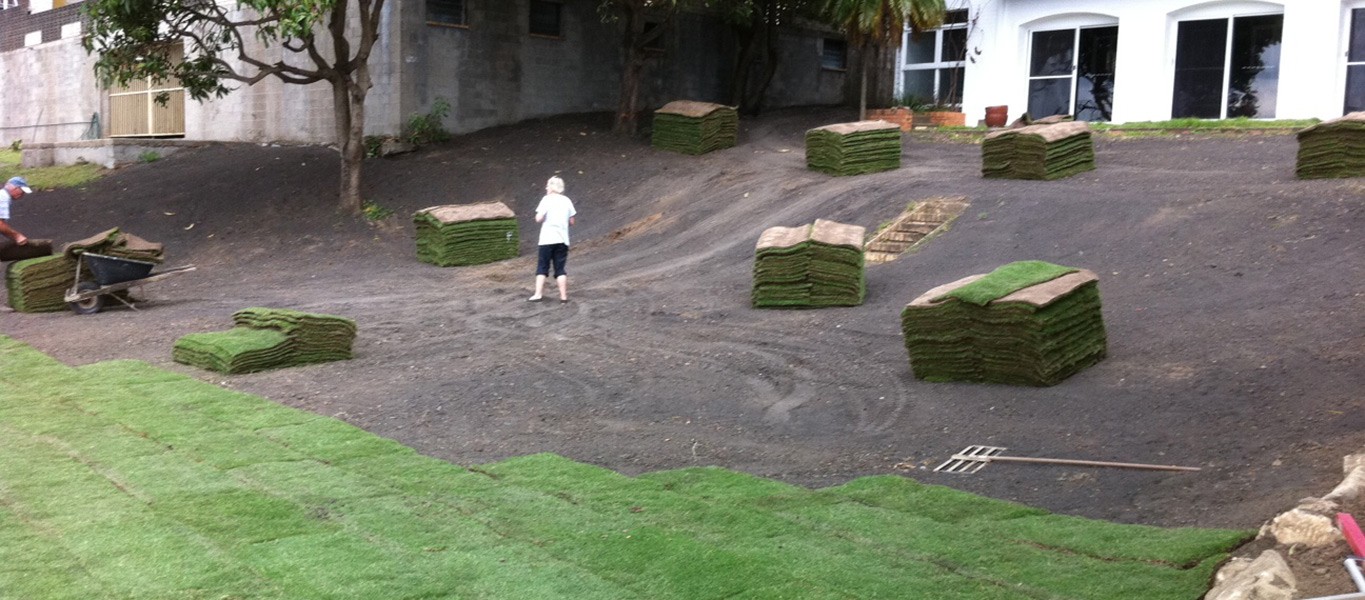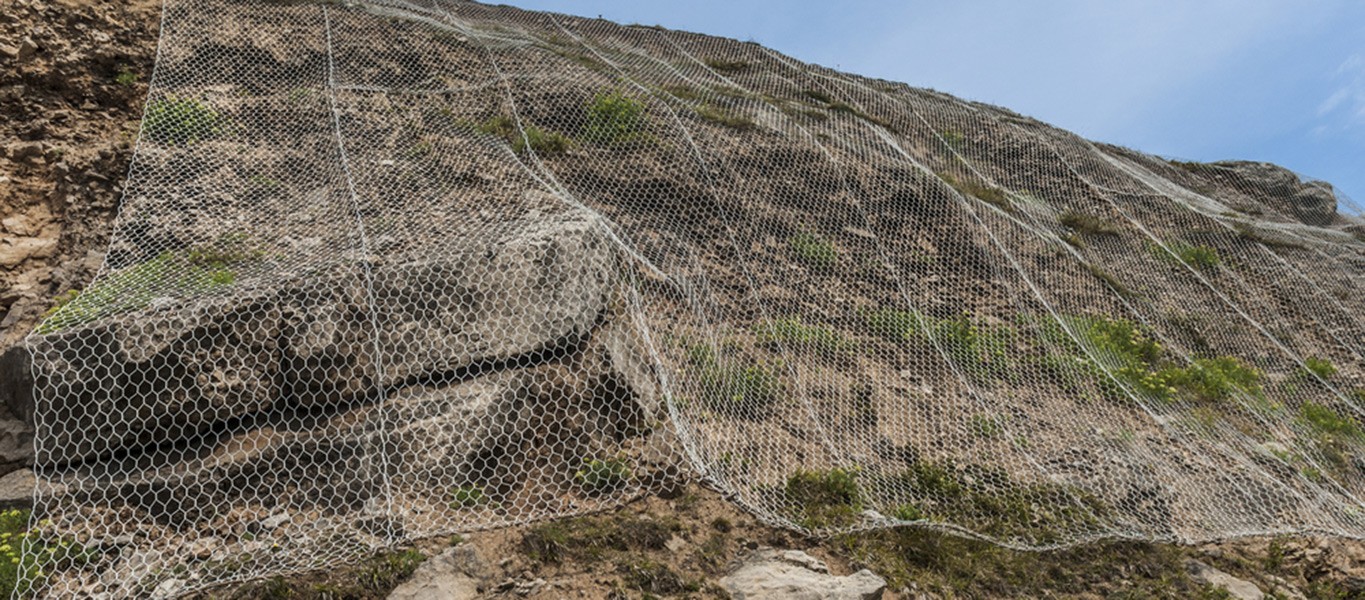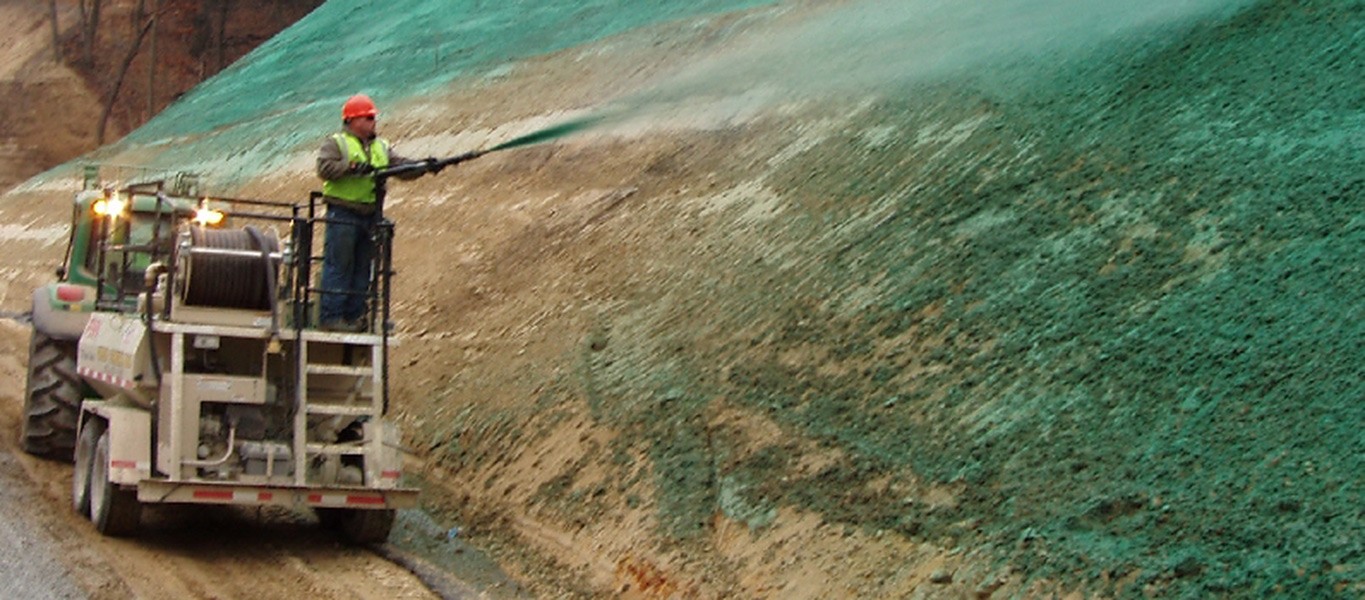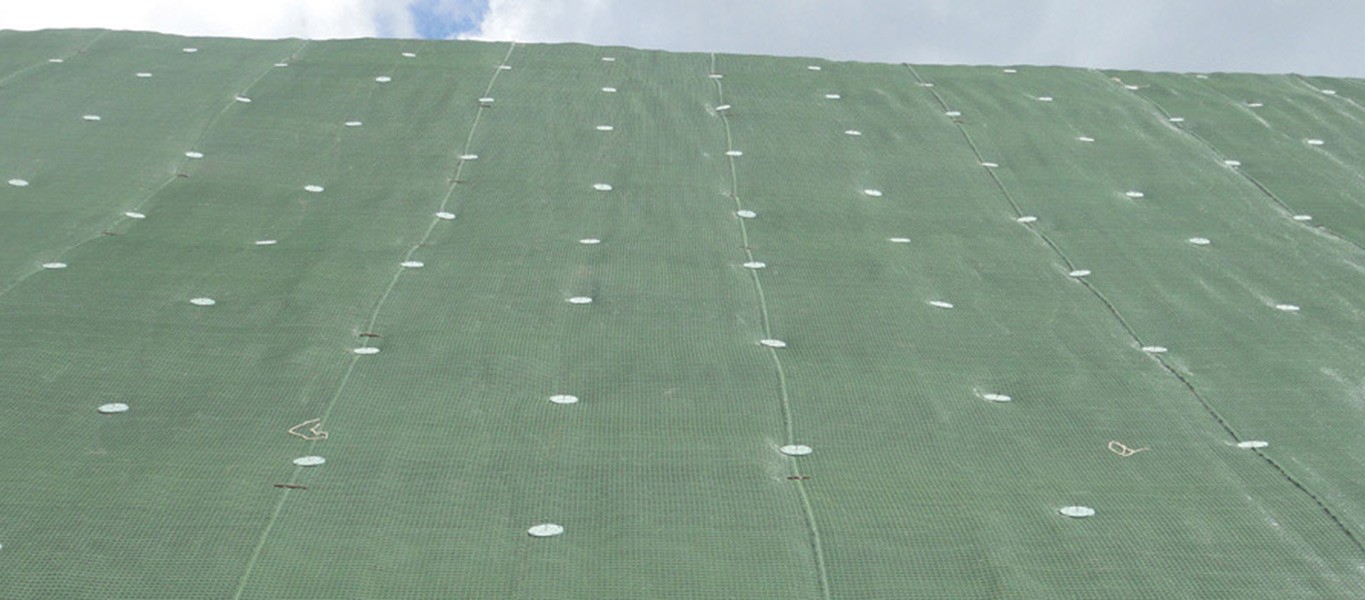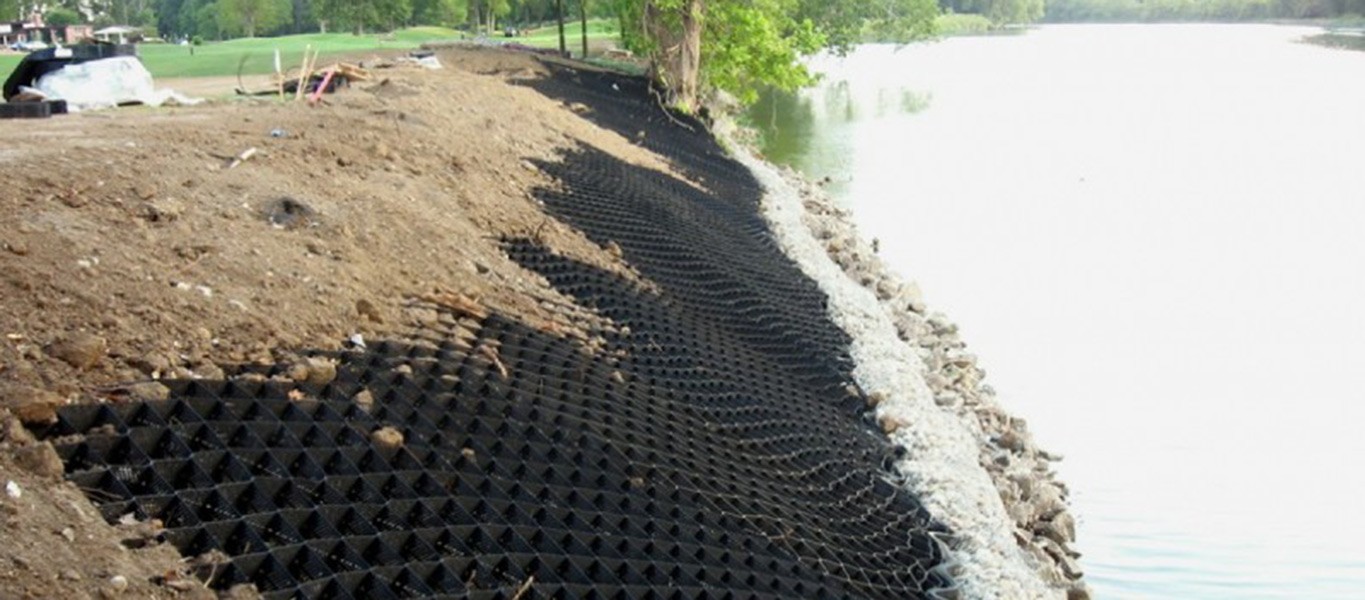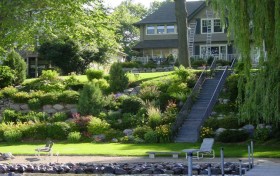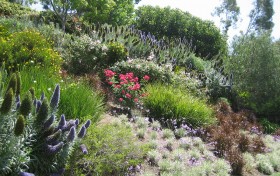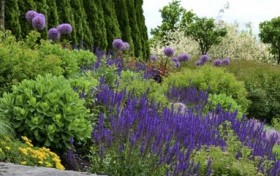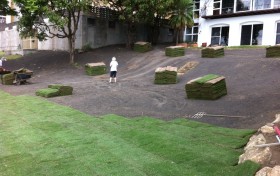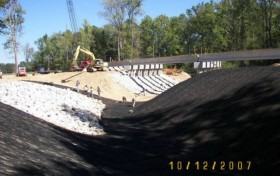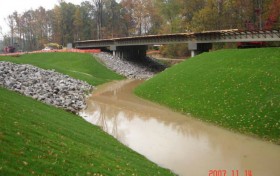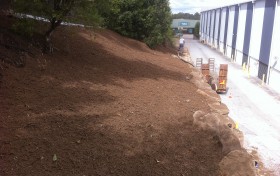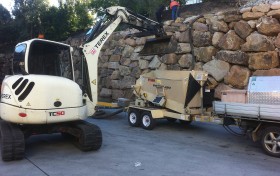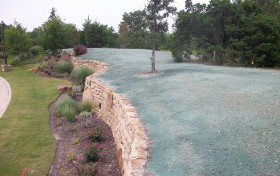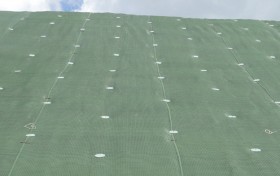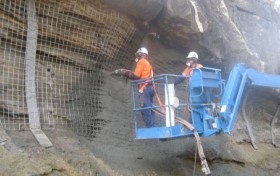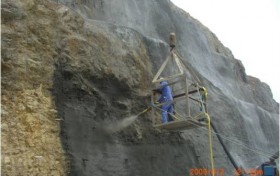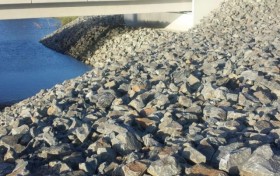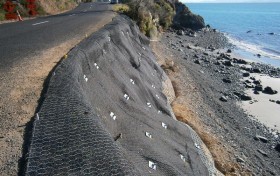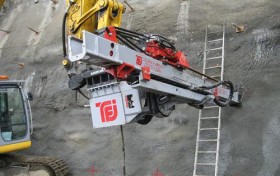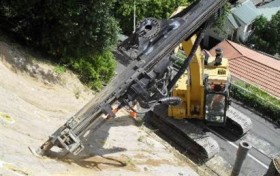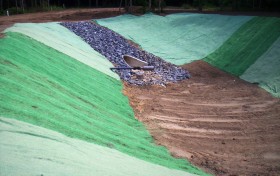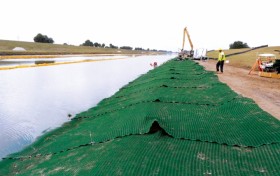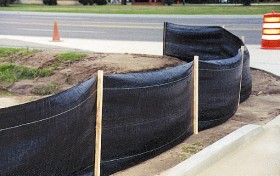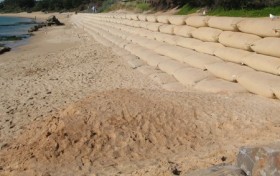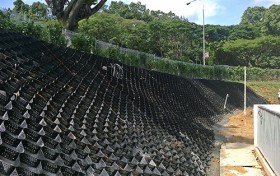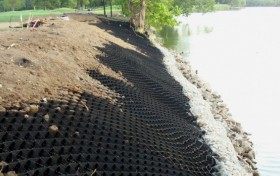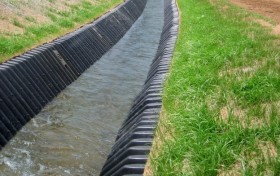Erosion control measures are concerned with the prevention or minimisation of soil erosion particularly that resulting from raindrop impact. Sediment can cause significant environmental harm if it is deposited or released into local waterways, gutters and drains. Envirostruct has carried out rehabilitation projects in areas where construction or erosion have necessitated rehabilitation and restoration of vegetation. For degraded or eroded areas we offer a complete remediation process including soil testing, plant identification, soil amendment, erosion control, sediment control, retaining, re-vegetation and maintenance.
Stabilisation with Vegetation / Remediation
One of the most effective ways of minimising or preventing erosion is for vegetation to be re-stablished. The placement of vegetation in the right location can provide erosion protection in sites characterised by eithier or both sheet flow and concentrated flow situations.
Turf
Reinforced turf can be grown off site and then transplanted into the desired areas and is able to withstand severe erosion forces. Reinforced turf allows for the use of environmentally friendly grass in place of hard armour such as rock and concrete.
Bark Blowing / Mulching
Mulching is one way to aid in water retention and weed control and enhance your gardens finished appeal. A variety of mixes and textures are available for your individual needs. We also supply soil.
- Pine Mix
- Hardwood Chip
- Softfall
- Mulch with tackifier
- Soil
Spray-on Erosion Control Blankets
Spray-on blankets are a convienent alternative to erosion control blankets in difficult situations such as steep and inaccessible areas, and around trees and rocky outcrops. The biodegradable material can be applied by spraying a water based slurry consisting of mulch, seed and soil binder from a truck mounted plant. This process can also eliminate the need for topsoil or other materials for revegetation purposes.
Erosion Control Blankets
Erosion control blankets are commonly used on embankments and other overland flow environments to protect the soil from rain drop impact erosion and to promote vegetation growth through moisture retention. Erosion control blankets are temporary measures and are created from organic materials which are biodegradable (for example, wool, cotton, straw, jute or coconut fibre) but they may incorporate nylon mesh to provide additional strength. Erosion control blankets are generally secured to the slope with staples made from heavy wire. If Erosion control blankets are not properly secured in place, erosion may occur underneath the blanket.
Erosion Control Matting
Erosion control mats are designed to be used in concetrated flow environments and are therefore made from durable materials. They are commonly anchored with reinforcing mesh or stabilised with bitumen emulsion. Erosion control mats can be installed on a temporary, semi-permanent or permanent basis and are particularly effective in road side table drains. Similar to erosion control blankets advice should be sought regarding the type of mat to suit the situation.
Long Term Non Degradable Turf Reinforcing Mats (TRMs)
Like erosion control blankets, TRMs provide surface protection from rainfall and run-off, but include the added strength from a mat and plant (seedbed) growth. In addition to following the manufacturers installation procedure for the TRM it is important to provide secure anchorage.
Several grades and types of Erosion Control Mats and Blankets are available, to suit any application.
Rock Gabions
Rock gabions are baskets made from flexible steel wire mesh and filled with granite or basalt rock. Rock gabions are constructed in various sizes and are commonly used for along creek banks, over soft ground, steep slopes and rock fall areas to trap sediment. The purpose of rock gabions is to prevent undercutting and/or scouring at the base of steep slopes. Vegetation may be incorporated into the gabion by placing cuttings between the gabion layers. The cuttings will take root in the gabions and the soil behind the structure. The vegetation provides additional stability once the root structure has developed.
Hydraulic Soil Stabilisers
Spray on soil stabilisers are manufactured from natural gums, polymers or hydrocarbons that penetrate the soil and bind the particles together. They are often diluted with water and sprayed onto the surface at various application rates depending on the soil type and the required design life. The typical design life is three to six months.
Silt Fencing
Sediment fences are generally the most efficient sediment control devices for building sites. A sediment fence is a temporary control measure constructed of semi-permeable geotextile filter fabric that is partially installed in a trench and supported by wooden posts. The sediment fence works by trapping sediment and allowing water to pass through the filter fabric. This type of device is suitable for containing course sediments in sheet flow environments.
Earth Retention and Slope Stabilization
- High performance matting, anchoring systems, plantings
- Retaining walls, geotextiles, coir mesh soil nails and anchors, soil containers
- Rock fall protection systems
Stormwater Management
- Rock mattress
- Gabion structures
- Scour aprons
Coastal Protection, Scour Protection
- Sand bags, coastal containers
- Gabions, rock mattresses




